Tiguan goes to greater lengths to impress
Filed under: Weekly test drives, Autos
By John Gilbert
The tradition of making cosmetic changes to make a new car look artificially new appears to be over. Auto companies have finally realized that if they build a model with a widely accepted design, staying with it is not a bad thing.
That seems to have been the belief of Volkswagen for years, particularly when you consider the Beetle, or the Golf. It also has had an impact on VW’s compact Tiguan SUV, which is more into refining upgrades than startling alterations.
I’ve written about the Tiguan before, because it is a solid, substantial, safe SUV, capable of hauling a good amount of stuff as well as people, and giving you a secure feeling of driving and riding, which is important to families. Over two generations of Tiguans, there wasn’t a lot of change for change sake, but in 2018, VW made a somewhat startling move.
The decision was made to lengthen the somewhat stubby Tiguan by more than a foot, and offer a their-row passenger seat as an option. The seats fold down, greatly expanding luggage capacity, and it made the third-generation Tiguan stand out for having grown substantially.
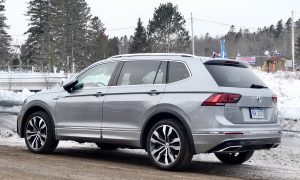
The Tiguan revisited Hwy. 61 to attend the Norwegian winter festival of Julebyen in Knife River, Minneaota.
VW did a great job of stretching out the body and making that extra room useful on the inside, without looking grotesquely bigger on the outside. It was almost unnoticeable unless you parked one alongside one of the first two generation models for contrast.
At first, always seeking the most compact versions of anything, my impression was that the new and longer Tiguan made me appreciate the older and shorter model more. Both were sold, but the shorter one seemed sportier. It was evident, however, that the shorter model would only exist until the supply ran out, then all Tiguans would be built longer.
I recently had the chance to spend a week in Northern Minnesota with the 2020 Tiguan, and we did find ways to put the extra storage space to good use. The model we tested was the SEL R-Line, loaded up and second only to the SEL Premium in VW’s five-model pecking order.
For 2020, the Tiguan SEL adds some technology and features, many of them dealing with connectivity, and safety. Blind spot monitoring, rear cross-traffic alert, forward collision warning and emergency stopping aid, pedestrian detection, the optional third-row seat, and a Fender premium audio with nine speakers added to the pleasant environment of the Tiguan SEL.
The Tiguan price is comparatively steep, but spending up to $38,000 assures you of comfort and convenience added onto the standard safety. The Tiguan hasn’t grown so much that the tried and trusty 2.0-liter dual overhead camshaft VW 4-cylinder can’t handle the extra size. Especially when bolstered by a turbocharger to attain 184 horsepower. The test vehicle also had 4-Motion, which is VW’s all-wheel-drive system.
The test Tiguan also added remote start and rain-sensing wipers, along with wireless charging, the latest cell-phone compatibility, and a large sunroof, plus a 1,500-pound towing maximum, which is adequate for fishing boats or light camping trailers.
Competition for the Tiguan comes from vehicles such as the Mazda CX-5 — one of my personal favorites — and the Honda CR-V, Nissan Rogue, and Ford Escape, among others. The proliferation of compact SUVs makes this a crowded segment, although as a longer vehicle, the Tiguan can also move up to challenge larger midsize SUVs such as the Explorer and the General Motors variants, and Tiguan still holds its head high as a premium entry.
Driving the Tiguan gives you the feeling of security in all situations. We had a good old-fashioned North Shore snowstorm during my time with the Tiguan, and it always provided a calming effect — safety, security, and the solid confidence in its ability to get you through anything to get home.
Comfort from the leather bucket seats of the upper-crust SEL R-Line, with its sporty touches, and the third row seat is not to be taken lightly. It’s not particularly roomy for adults in the way-back, but it is capable, and with the 4-Motion models, you get 5-7 occupants. With all three rows in place, there is 12 cubic feet of storage behind the third row; folding down the third row obviously increases that, and if you fold down both the second and third rows, you have 65.7 cubic feet of storage.
In its renovated product line, Volkswagen is streamlining things with brisk and efficient engines. The 2.0 Turbo is the only one available in the Tiguan, and it is capable of being quick enough and still delivering mid to high 20s in miles per gallon. Some of the modern touches are more than gimmicks, things like lane-departure warning and rear cross-traffic alert, and while you get a larger navigation screen with the SEL, you appreciate those features once you drive with them.
In years past, there might have been two different 4-cylinder engines and a V6 available, but the do-all 2.0-Turbo overlaps its assets to cover all demands. You can find faster SUVs, and more economical ones, but it difficult to think of one that offers both sufficiently, plus the size, room, safety and security, and the promise of that solid build and style.
Style is purely subjective, of course, but in my mind, the sleek grille and the smooth look without being gimmicky are complemented by a neat crease along the side. And if the realization occurs to you that you needn’t trade in your vehicle every two years to keep up with always altered designs, you admire the stately look of the new Tiguan even more.
Santa Fe fills niche amid new Hyundai SUV flurry
Filed under: Weekly test drives, Autos
By John Gilbert
It’s almost as if Hyundai is its own worst enemy. Or maybe we should say Hyundai’s excellence in nearly every segment of the auto business seems to be obscuring some very good Hyundai products in other segments.
A case in point is the Santa Fe. When Hyundai completely redesigned the Santa Fe two years ago, it was truly something special, in my mind. The introduction of the midsize SUV was at Park City, Utah, just east of Salt Lake City, as you head up into the mountains. All of the models we drove were loaded 2019 models, with 2.0-liter turbocharged 4-cylinders.
We drove them to the top of the mountains and then followed some curvy roads at high altitude. As I wrote at the time, my partner was a Hyundai official, so I got to drive the whole way. As I drove quite briskly on those mountain roads, he urged me to go harder, to really see how it performed. I did that, and came away thoroughly impressed.
That was my first experience with Hyundai’s state-of-the-art lane-keeping system. Nearly every company now has something similar, which alerts you if you wander out of your lane, but Hyundai’s was the best I’d tested. What I did was to set the driving mode to the highest sport setting, firming up the steering and suspension, and then I ratcheted up the lane system to go from lane departure alert, past lane-departure assist, all the way to lane-centering assist.
What that does is keeps your Hyundai in the center of the lane, not just in the lane. You could overpower it, but why would you want to? It keeps you in the center of the lane, no matter how aggressively you drive, and it does it better than nearly all other systems I’ve driven.
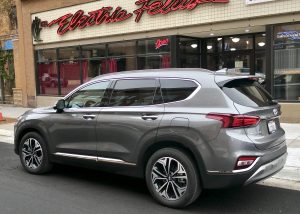
Larger than the Kona and Tucson, smaller than the new Palisade, many might find the Santa Fe just right.
The problem is that Hyundai also came out with a fabulous compact SUV called the Kona, about the same time — a bit smaller, similar in design, and capable of better fuel economy, and also equipped with the lane-centering equipment. Also, Hyundai was about to unveil its all new Palisade — the largest SUV the South Korean conglomerate has ever built. Hyundai’s partner, Kia, has one of its own, called the Telluride, and the differences are so slight I’d challenge anyone to pick their preference. Being a large, three-row SUV that can haul large quantities of people and stuff, it also benefits greatly from the lane-keeping and centering trick.
So rigorous were all those introductions that Hyundai held off on introducing the new Tucson, its stalwart midsize SUV that slots just in between the Kona and the Santa Fe. Indicative of how good those flanking vehicles are, the Kona was named the 2019 car of the year by Newcarpicks.com, and for 2020, the Telluride was named Motor Trend’s SUV of the year.
Obscured by all the adjacent publicity, the Santa Fe got pretty much left out of Hyundai’s advertising campaigns. So it was with great interest that I found myself in line for a week-long test drive at home on Lake Superior’s North Shore during a recent week of this too-soon wintertime — a never-ending flurry of flurries that blanketed us with several of those “once every 20 year” snowstorms.
The Santa Fe was, just as I had recalled, the perfect size to handle any such snowstorms and family hauler requirement.
Also, as impressed as I am with the Kona and its highly efficient size and agility, and with tests of both the large twins Palisade and Telluride, the 2020 Santa Fe plugs right in where it had remained in my memory bank — the perfect size to capitalize on Hyundai’s advanced technology.
The sensory-surprising lane-centering electronics that work so well in everything from the Kona through the Palisade does a great job of making sure you don’t get out of line — literally — in the Santa Fe. You can get the Santa Fe with front-wheel drive only, but why would anyone who lives in or near snow country do that? With the all-wheel drive system, you also have the capability to turn a switch and put the thing in full-time 4-by-4, so that if you were stuck in axle-deep snow, you could shift and get all four wheels pulling equally, very Jeep-line in manners. That same technique works for off-road use, too.
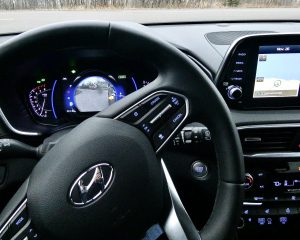
Santa Fe borrows lane-change dash screen from Palisade for 2020, remains best example of unexcelled lane-centering technology.
The Santa Fe also benefits from the fact that Hyundai remains the only auto maker in the world that owns its own steel plant, so it can load up its vehicle with high-grade steel to insure safety as well as chassis rigidity. That also might be the benefit of Santa Fe’s perfect compromise of size, which continues to be in need of being pointed out repeatedly, rather than ignored.
Also, since the bigger Palisade adopted some of Santa Fe’s attributes, it’s only fair that the 2020 Santa Fe gets to use a couple of Palisade features. One, particularly, is something I found very useful on the Palisade. It has to be on the top model, the Ultimate, but it is a nice, large, round speedometer that has a trick inner screen. Let’s say you are driving down the freeway, and you have worked your way out of some congestion but you’re still in the left lane. Time to move to the right, which is only proper, and when you flip the directional stalk just slightly to get the three-flash blinker indicating your intention to change lanes, the inner part of the speedometer becomes a round video screen that shows the image from a tiny camera on the right outside mirror, a panorama of the entire right lane, just so you can be sure you aren’t just ahead of a faster-moving vehicle on your right.
In the bigger, more luxurious Palisade, it was an impressive touch. But now it’s also on the Santa Fe, which is priced from $26,000-$36,000 and punches above its class in every model grade.
The 2.0-liter turbocharged 4-cylinder develops 235 horsepower and 280 foot-pounds of torque. The optional engine in the more base models is the tried and true 2.4-liter 4-cylinder, but is not turbocharged, creating the interesting scenario where the larger 2.4 has 185 horsepower and 176 foot-pounds, meaning the turbo kicks the smaller 2.0 up to higher power grades.
We found we were able to coach 26 miles per gallon out of the 2.0-turbo, if you kept your foot out of it. That is one spot where the lighter, smaller Kona benefits by being powered in a sporty manner by the 1.6-liter turbo, a jewel that also easily gets over 30 miles per gallon.
If fuel economy matters, the Kona is a great alternative. But if you haul adults or large teenagers with any regularity, you will be glad you chose the larger and roomier Santa Fe. Adding the Palisade and the soon-to-come Tucson, Hyundai appears to have a four-pronged edge on all its competition. Just be careful to not overlook whichever one might be the ideal fit for your family.
Whether SUV or station wagon, Subaru Outback fits
Filed under: Weekly test drives, Autos

New Outback on new platform has flat-opposed 2.4 Turbo 4 with 260 horsepower and 277 foot-pounds of torque.
By John Gilbert
There is practically no resemblance between the 2020 Subaru Outback and any Subaru you might have owned, ridden in or observed from 15 or 20 years ago. That is not entirely a bad thing, because the newest Subarus have blazed quite a trail for themselves as being among the most trusted and depended-upon cars in creation. and they’ve earned every degree of loyalty they’ve accumulated.
Subaru has fought its way to automotive prominence over the last four decaded, spending quite a few of those years being known for building all-wheel-drive vehicles as tough as its parent — Fuji Heavy Industries, in Japan. Whenever that was acknowledged, it was mainly uttered in scorn, because as rugged and tough as its cars were, many Subaru models didn’t have a lot more style or agility than those big earth-moving road graders made back in Japan.
But they were tough, and established a loyal clientele, especially in the Upper Midwest. There must be a very profitable Subaru dealership on Michigan’s Upper Peninsula, because when you drive to Houghton or Marquette for a hockey series, you see Subarus all over the place. Ten-foot-deep snowdrifts are not intimidating to Subaru owners.
The same is true in Duluth, Minnesota, where winter driving is a ferocious accompaniment to winter driving. In recent years, so many competing cars have added all-wheel drive that Subaru’s once vital advantage is no more. But the loyalty remains.
Since the surge over the last decade to SUVs, Subaru has been reaching for the ring to get on the merry-go-round, and it has gone so far as to complain that it never gets credit for inventing the first SUVs. I always thought that was misdirected, because a clever ad agency could have come up with dozens of ways to point out that Subaru made SUVs before there was such a thing as SUVs.
Over the years, also, Subarus have become more and more refined, and when I drove a new Legacy sedan a few years ago, I said it doesn’t look like any previous Subaru — and that was a good thing! Over the last five years, Subarus have added style and appearance queues to make their sedans and compact wagons much more appealing, while sticking stubbornly to those little flat-opposed engines, wherein the cylinders go back and forth instead of up and down, with the crankshaft in the middle, and the cylinders oppose each other, taking the design from vintage Porsches.
Adding things like overhead camshafts and fuel injection have helped Subaru gain stature, and the advent of the Impreza, and then its offshoots, the WRX and then the WRX STI high-performance models, which became the favorite tool of serious off-road racers. If you haven’t driven a fully-loaded WRX STI, you ought to, because they show what can be done if you take a winter-beating, tough compact and arm it with stiff suspension, Recaro bucket seats, and more power than ever should have been put into a little car.
There are still a number of compacts and midsize Subaru sedans out there with their asymmetric all-wheel drive to go anywhere at any time of the year. And Subaru has maintained its course, aimed at the popularity of SUVs.
That brings us back around to the Outback, which began life as a neat compact station wagon version of a Subaru sedan, but it has grown into its own image now. The newest Outback is still a station wagon, but it is bigger — longer, wider, heavier and roomier than its predecessors, and with that AWD and choice of engines, you can take the family anywhere in some degree of style and comfort.
As someone who has test-driven Subarus for several decades, as its personalities have changed and then changed again, I have had one issue that always bothered me. No Subaru model ever seemed to get the fuel economy its sticker sheet indicated. It wasn’t until three or four years ago that I realized that if you drive under the speed limit — say 63 in a 65, or 53 in a 55 — you can reach those lofty figures and get an honest 30 miles per gallon in a midsize sedan or compact. But if you try to keep up with the flow on freeways these days, which means going 5 mph or so over the limits, you might calculate that you’re at the low to mid 20s, instead of 30.
My belief is that Subaru knows it’s all a compromise, and every time it had the choice, its engineers went for more power — impressively, except to those oddball reviewers who like higher mpg. A co-worker I used to have was considering two alternative cars, and one was a Subaru. I alerted her to my concerns, saying nothing but good things about the Subaru, except for the fuel economy. Despite my warnings, she bought the Subaru. Several months later I asked her how she liked it, and she said she liked everything about it — except it got lousy fuel economy. She acted like it was my fault.
The new Outback for 2020 still has the flat-opposed “Boxer” engine, now up to 2.4 liters, and it is turbocharged to deliver 260 horsepower at 5,600 RPMs, with 277 foot-pounds of torque, occurring between 2,000 and 4,800 RPMs. Certainly enough to move the 3,937-pound wagon swiftly. I must apologize, because my avid following of the history of such cars prevents me from thinking of the Outback as an SUV, even though Subaru is eager to earn that current and trendy monicker instead of the outdated and stodgy-sounding “station wagon.”
The Touring XT model, which the test drive vehicle was, had a continuously variable transmission, which shifts by bands and has a somewhat droning feel as it glides up to its next ratio. The test Outback also will tow a 3,500-pound trailer, which is impressive for such a compact vehicle.
Inside, the Outback is comfortable and has all the features of contemporary midsize SUVs, along with enough height for ground clearance into your snow-filled driveway or your cabin where you haul your snowmobile in the winter or fishing boat in the summer.
Included among those features are stop-start at red lights to improve fuel economy, EyeSight advanced adaptive cruise control, lane centering to keep you in your lane on the highway, Starlink Multimedia navigation with an 11.6-inch touchscreen that controls audio, climate and Bluetooth connectivity. Blind-spot detection and lane-change assist complement the power seat adjustments and a supple but slightly squishy suspension and the CVT transmission to keep the high-powered engine under conservative control. Active torque-vectoring keeps you headed the right direction around corners, and the climate controlled interior and your bucket seat settings keeps the Outback a pleasant place to be.
Adaptive headlights, taillights and running lights are all LEDs for maximum brightness, and with all its assets the Outback will be the latest in a move up the contemporary ladder for the loyalty customers who know and depend on what Subarus offer. Fuel mileage on the turbo model range from 23 city to 30 highway, although we found it wasn’t real willing to reach over 25 mpg, but it was already chilly outside for the impending winter.
The Outback Touring XT model, with sunroof and Nappa leather seats among its long list of features, reached and just barely cleared $40,000 — $40,705 to be exact, including destination. Subaru wants the Outback to be known more as an SUV than a station wagon, and while I don’t find anything objectionable about the term station wagon, I hope it isn’t because Subaru realizes it can charge more for a vehicle if it’s considered an SUV.
Mother Nature can halt 475-HP Durango
Filed under: Weekly test drives, Autos
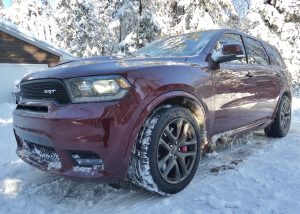
A 475-horsepower 6.4-liter Hemi makes the 2020 Durango SRT go through everything — except , maybe, a 29-inch blizzard.
By John Gilbert
In ordinary circumstances, getting the chance to test-drive a new Dodge Durango SRT would be a fun, light-hearted adventure — big SUV, macho look from every angle, a look supported by SRT suspension, interior, wheels and engine. Especially the engine.
We’re talking Dodge’s legendary 6.4-liter Hemi V8, basically the same engine that powers the overpowering Charger and Challenger members of Dodge’s hot-rod car collection. In the Durango, the engine is detuned a bit, by losing the supercharger and configured to send power to all four wheels in its all-wheel-drive layout. Calling it detuned seems unfair, unless you’ve driven the supercharged Hellcats, because nearly 500 horsepower is nothing to growl at.
The Durango still gets tuning from the SRT specialists, and it hits the road with 475 horsepower and 470 foot-pounds of torque. As you can imagine, that sort of power sends the Durango off and running with the power of a sports sedan, and the thrust of a dragster.
Going back to my original premise, though, it would have been just fun and roaring under ordinary circumstances, but on Thanksgiving week in Duluth, Minnesota, there was nothing ordinary about anything. First came an 8-inch snowfall, in the form of a blizzard blown by winds off Lake Superior. Two days later, the “big” storm hit. This one started off in Southern California and carved a wide but artistic swath across the Midwest, finally reaching its target at Lake Superior. The swirling winds hit 58 mph, and the city got an official 22 inches of snow. Out on the ridge overlooking the North Shore, where we live, we got just a shade under 29 inches from that storm.
This was heavy, moist snow — not the kind that makes for good snowballs, or snowmen, but the kind that feels that each shovelful might break the shaft of the shovel. As it turned out, we were about to venture out after that storm to drive our niece to the Duluth Airport for a 5 a.m. flight, which was delayed to 6 a.m., then 8 a.m., then cancelled, with her trip back home to New York switched to United via Chicago. We were ready to go, because I was going to be behind the wheel of the Durango, and churning through any snowpile we might find would be exciting.
Wrong.
I barreled out through bumper-deep snow in our 100-yard driveway, up and over the outer lip and onto the rural road that runs straight south to the Lake, two miles away. But as soon as I got to the road itself and completed my left turn, the big and powerful Durango was brought to a halt right in the middle of the road. I tried to back up, we just spun. I tried to lurch forward, no go. Fortunately, at 6 a.m. on that Sunday morning, there no other folks were out trying to drive. I slogged back to the house and returned with two shovels, and my wife, Joan, and I went to work.
With no passes having been made by a County plow, the 29 inches made a formidable cover over the entire road. We had pushed enough snow ahead of us as we exited our driveway that it all compressed into a virtual wall that was solid enough to stop us, right in our tracks, with snow halfway up the stylish black grille. The ever-aware electronic sensors notified us that the front sensor was obscured. No kidding. It also warned us of an imminent crash on our right front, but it was only that compressed snow that our sensors mistook for a wall. For most of an hour, we shoveled snow from under the front and rear of the Durango, and from both sides of each wheel, as well as under the vehicle.
I went back to the driver-assist segment of the diagnostic screen, and after looking over 20 or 30 possible settings, I spotted one, next to last, that said, “snow.” I clicked it. Not sure if it made any difference, probably only starting us up in second gear, but it gave me a dose of confidence, and I finally was able to coax the big beast, by gently rocking forward and back a dozen times, and we edged ahead. Once we got a tiny bit of momentum I was happy we were on top of the hill, heading down.
The wonderfulness of all the bucket seat comfort and gadfgetry — including dragstrip launch control for the heavy-duty 8-speed automatic — was relegated to the back burner as we drove the two miles, with total whiteout conditions giving us no idea of where either side of the road might be. When I got down to the freeway, nobody was coming and I pulled out confidently, because surely the freeway that now makes up Hwy. 61 would be plowed.
Wrong again. I pulled out to where the lane should be and turned right, and spun 90 degrees, coming to rest sideways. Again, with nobody coming, I calmly straightened out and advanced, realizing that a freezing drizzle that hit first had formed a smooth and slick coating under those 2 feet of snow.
There had been no plows reaching any streets except maybe four main ones, and I guessed right about which ones they might be as I climbed the hill and headed for the Duluth airport. We got there at 8 a.m. and were not surprised that the 8:05 flight had not left, because it had been cancelled. At least we could get breakfast before the 10:50 flight. Wrong again. Nobody who worked at the Duluth Airport restaurant had made it to work. Nor had anyone made it to operate the Delta desk.
Since our niece’s flight had been cancelled, Delta had rebooked her on a United flight to Chicago and then LaGuardia — but that flight was also cancelled. As the line lengthened at the United counter, a nice young woman wearing the weather-proof suit of a gate attendant came by and said she would try to help people get rebooked via Delta. Her name was Elena, although I can’t be sure of the spelling. I’ve had some excellent service from desk folks at Delta at the Duluth Airport, but never one as accommodating, friendly, and effective as Elena, who managed the magical rebooking, and got the change-of-carrier fee waived as well.
So our niece was on her way, with no further adventure. We, however, had to get back home, after trying unsuccessfully to find any of our favorite breakfast places that might be open. We were 0-for-6 before we called the Boat House in Fitger’s Hotel. Great spot, and they were open. We got home and I parked the beautiful metallic red Durango by our mailbox, out on the road.
Our other project to complete before all that on Thanksgiving Weekend was to get our son, Jack, on his way back to the Twin Cities. We had gotten him a good pair of tires to put on the front of his Mazda6, but we hadn’t been able to find anyplace that would mount them, and we didn’t want him to drive back on the old tires. That, however, is a separate story by itself.
Our test-drive Durango began life at $62,995, but loaded up with all the high-end features that an SRT commands, the sticker was $73,060. It did handle all the marginal tunnels that used to be streets for the next few days, just as it had breezed through all the pre-snowstorm driving, which showed off its impressive stability and handling devices were outstanding, including the steering wheel paddles allowing manual control of the 8-speed.
The know-all sensors and computer stuff went beyond the norm. For example, at one point, a note flashed onto the screen where the audio and phone records had been and it notified us that a blizzard warning had been issued for Lake and St. Louis counties. We’re in St. Louis County, and such tips are invaluable, considering how many strange twists and turns of weather can occur near the big lake. We were just unprepared fir getting the notification from our vehicle.
By the time our venture through the the big snowstorm ended, and the big plows came by on our road, our neighbor, Greg, had saved us from what would have been a half-day of shoveling. Greg has a snow-blower and an all-terrain vehicle with a plow, and he is an artist with both. And he used both, one to do the preliminary work and the other to polish it off.
If the Durango has almost everything, my only suggestion might be for Dodge to add a plow. That would only make it a fair fight, because we could have blasted our way out of the driveway and down the road with 475 horsepower plowing 29 inches of snow in all directions.
PERFECT TIMING, PERFECT NAME
Meanwhile, back to our other storm-weekend task. A lot of service outlets in the Duluth area were closed for the Thanksgiving holiday, and on through Friday and the long weekend, and I can’t blame them. Those that weren’t closed, did close after the big snowstorm hit us. Finding a shop where we could get our two nearly-new Goodyear allseason tires mounted for our older son, Jack, was like a perfect holiday story that he couldn’t find anyone at a shop capable of mounting them on his wheels.
If this was a movie, we would now need a flashback, to several years ago, out in Los Angeles, where a fellow named Donnell Kelly decided to move his family to accommodate his real estate business. Somehow, after a stop or two along the way, he somehow found is way to Duluth. He decided to open a service outlet in West Duluth, way out on 69th Avenue West and Grand Avenue, near the Duluth Zoo. It’s not a fancy place, and he named it “Good Timing.” That’s a great name for a place that tunes engines — setting the timing just right — and does everything else, too, from engine tuneups to overhauls. On social media, numerous customers had given the place glowing reviews.
We called, and Donnell said he was extremely busy, but he’d mount the tires if we could leave the Mazda6 there for a few hours. We drove the required 25 miles to get there and found a basic, simple shop, and a lot lined with cars. A lot of cars could mean slow service, but slow service leaves you with few, if any, customers. A lot of cars means you do good work, which attracts more customers seeking good work at reasonable prices.
Donnell was in the office, down at the end of the place. He told me he does honest work, and knows that sometimes people come through traveling and are desperate to get work done and be on their way. That’s the way it is with tires, too, he said. When people need tires mounted, it’s not a big profit thing, but he knows it usually means desperation for someone on a trip, so he stays open past his 5 p.m. closing time so his five-man crew can accommodate those people.
“I tell people what their car needs, and that’s what I do,” he said. “I’m honest, and that means I can go home and sleep soundly every night, because I know we’ve done an honest day’s work. We close at 5, but if I tell someone we’ll get it done, we’ll stay as long as we have to to get it done.”
We came back at 5 and got Jack’s Mazda6, and the next day, he was all set to drive to the Twin Cities, on the Saturday when the storm started and then hit in full fury. Jack drove southward about 25 miles and turned around at Cloquet to come back to our home on the North Shore. We worried because it took him about an hour and a half to get back. Turns out, he stopped to help a fellow who had driven off Interstate 35’s whiteout shoulder.
That’s my kid. Always willing to help someone who needs it. Maybe Donnell could use another honest, good samaritan.
Arteon poised to lead VW resurgence
Filed under: Weekly test drives, Autos
By John Gilbert
It wasn’t a long trip, just a short jaunt on an interstate near Duluth, Minnesota, but immediately my wife, Joan, and I realized we had found something new to like about the car, beyond its great looks and refined interior comfort.
It was smooth. Not just non-bouncy smooth, but luxury-car smooth, as we headed up the North Shore of Lake Superior totally at ease and with an added blanket of security from that smoothness. A sort of quiet, uninterrupted feeling of a peaceful commute.
This is not to say that the Jetta, or Passat, isn’t smooth, but the 2020 Arteon is my new favorite in the whole VW array.
Volkswagen is in the midst of deciding on its variety of cars with which to try to pump up its numbers in the United States. We hear that the specialty GTI and Golf R will be coming in, but not the normal, garden-variety Golf. We are certain the Jetta will be sold here, and it has proven to be a popular, economical 4-door compact. The larger Passat also remains. Along with the various SUVs, Volkswagen seems to have all the angles covered, and the Arteon replaces the CC, which was a breakthrough with its 4-door-coupe styling a decade ago. The Arteon retains that same silhouette, covering a roomy rear seat and an enormous trunk..
VW also has provided some of the biggest news in the realm of auto shows, because it has shown frequent views of the Golf-e, VW’s new pure-electric vehicle that will take care of the zero-pollution end of it, and talk is that Volkswagen will build the EV at a new wing on the plant in Chattanooga, Tennesee.
The Arteon, however, has the chance to give the company a near-luxury sedan that can compete with anybody else’s full-luxury cars. With a 2.0-liter 3-cylinder, an engine with endearing popularity as the engine that makes the GTI the “hot hatch” icon of the industry.
Even though the Arteon is quite large and spacious, the potent little 2.0 can handle it. The test car, in a gleaming black that showed off its artistic grille in high-contrast perfection, has enough power to easily make the Arteon perform like a sporty sedan, even though your neighbors will be convinced you’ve gone upscale to a luxury car.
With direct injection and a turbocharger, run through steering wheel paddles is you want to shift the 8-speed automatic by hand, you are somewhat surprised that such a comfortable, roomy sedan can switch personalities in a flash. It also came with 4-Motion, Volkswagen’s highly efficient all-wheel-drive system, and you can play with the driving mode switch to set yourself up for economcal, or comfort, or sporty settings.



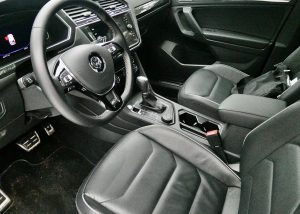
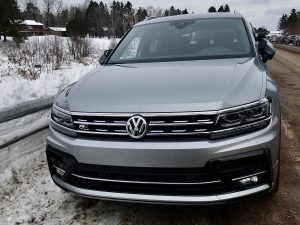
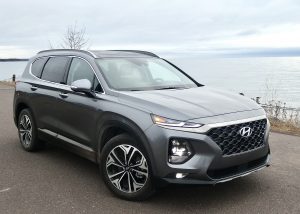
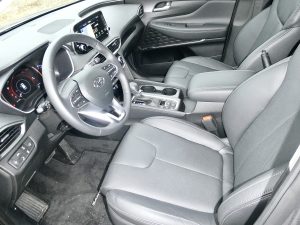
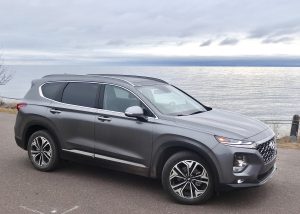
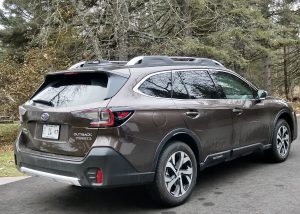
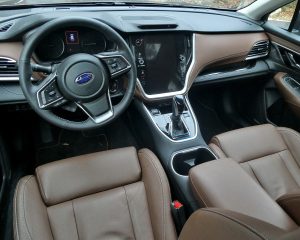
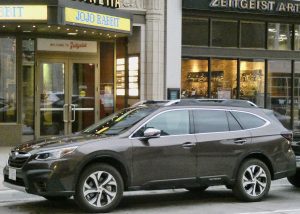

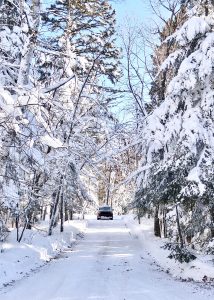
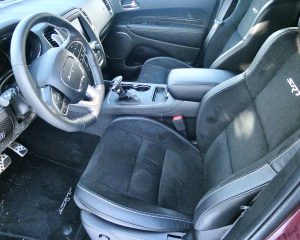
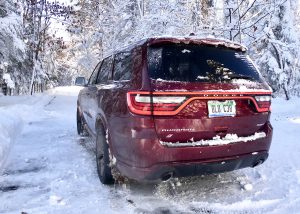
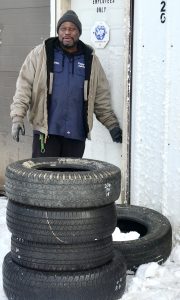
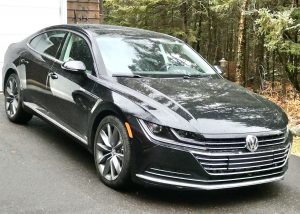
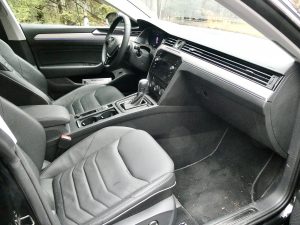
 John Gilbert is a lifetime Minnesotan and career journalist, specializing in cars and sports during and since spending 30 years at the Minneapolis Tribune, now the Star Tribune. More recently, he has continued translating the high-tech world of autos and sharing his passionate insights as a freelance writer/photographer/broadcaster. A member of the prestigious North American Car and Truck of the Year jury since 1993. John can be heard Monday-Friday from 9-11am on 610 KDAL(www.kdal610.com) on the "John Gilbert Show," and writes a column in the Duluth Reader.
John Gilbert is a lifetime Minnesotan and career journalist, specializing in cars and sports during and since spending 30 years at the Minneapolis Tribune, now the Star Tribune. More recently, he has continued translating the high-tech world of autos and sharing his passionate insights as a freelance writer/photographer/broadcaster. A member of the prestigious North American Car and Truck of the Year jury since 1993. John can be heard Monday-Friday from 9-11am on 610 KDAL(www.kdal610.com) on the "John Gilbert Show," and writes a column in the Duluth Reader.